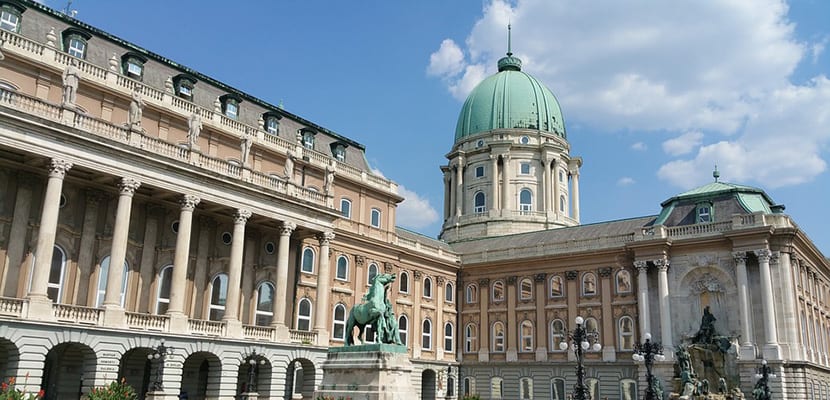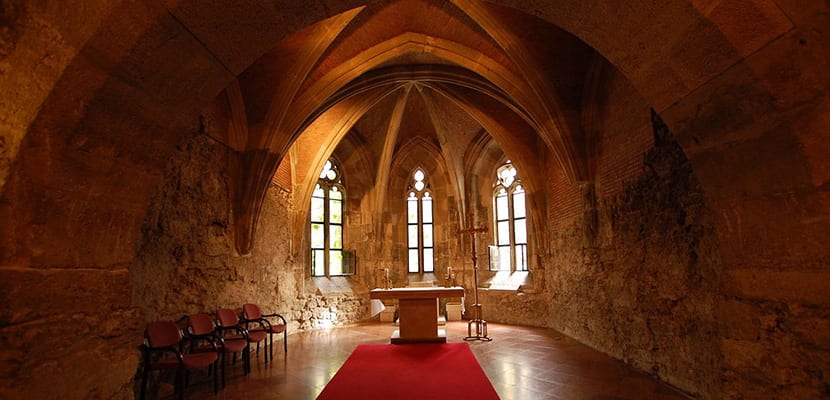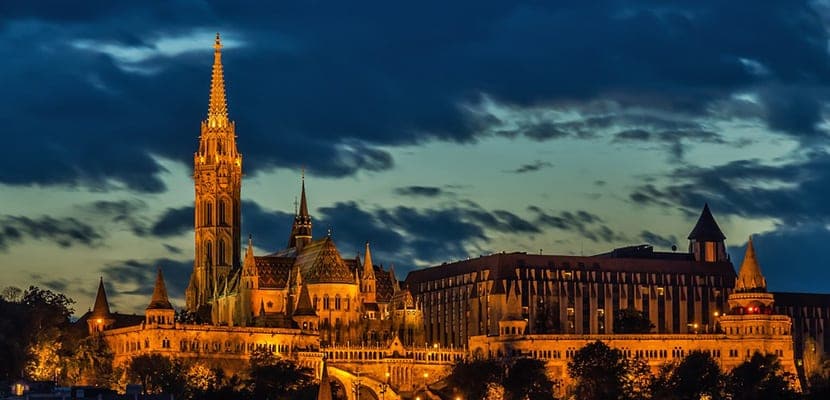
La visit to the city of Budapest It includes a mandatory walk through the Buda Castle, also known as the Buda Palace or the Royal Castle. This beautiful castle that rises above the city has its history and was built in the XNUMXth century and rebuilt in the XNUMXth century.
Let's see all the details about this castle and its corners, with everything we need to know before going to visit it. We will also remember some of the points of interest of the city of Budapest, which is not only focused on its castle.
History of Buda Castle
Where the city of Budapest now stands there was a Roman settlement and later it was populated by the Huns, the Avars and later the Hungarians. The settlement of Buda along the Danube was growing in importance, so the construction of castles took place. The current castle began to be built in the XNUMXth century on the hill, in late Gothic style. Later, it was rebuilt in the 1987th century in the late Baroque style. During the Siege of Budapest in World War II the castle was practically in ruins, which led to a new reconstruction, this time in neoclassical style. In XNUMX the castle became part of the UNESCO World Heritage Site.
How to get to the castle

To get there we have it very easy, especially since this castle can be seen from many points, since it is located at the top of the hill that dominates the city. You simply have to cross the well-known Chain Bridge and climb the slope that begins next to the tunnel. If we do not want to do the journey on foot because there is a lot of climbing, we can enjoy the great funicular. It is best to buy the round trip ticket on the funicular, since it is better priced.
Visit to the Castle

At present the castle houses some institutions and during the visit you can see some of them. The Budapest History Museum It is located inside the castle and it tells the history of the city from the Middle Ages to the present. The museum has four floors and has objects of daily life from different periods. One of the most interesting parts of the museum are the basements.
La Hungarian National Gallery it is also inside the castle. In it you can see various works of Hungarian art from the Middle Ages to the present day. Almost the entire museum is devoted to painting, but it is also possible to see some sculptures and altarpieces from the late Gothic period.
Another of the visits to be made in the castle is to the Széchenyi National Library. It must be said that the visit to the library must be booked in advance by phone, although it is positive that admission is free.
Buddha maze
The Buddha Labyrinth is not exactly under the castle, but is near the Bastion and the Church of St. Matthias. This maze is a network of caves and natural tunnels that have been created by the action of groundwater for centuries. Within them you can enjoy guided tours, events and even a coffee. You can visit more than a kilometer of its galleries. It is possible to choose the general guided tour but you can also do tours alone or in pairs, with special passes.
On the web you can learn something about the history of these caves. It is said that they were a refuge and also that they may have been used for secret operations or as a means of escape. In the area of Prehistoric Labyrinth there are cave paintings. In the Historical Labyrinth there are scenes from the history of Budapest. In the cavern called Eje del Mundo there is an orientation point to be able to walk through the caves without a guide. Sometimes it is possible to visit at night.
The Buda district
Not only the castle and its labyrinth are the object of visit in the city. The Buda district has a few other points of interest. In the church of San Matías It is where the kings of Hungary were crowned. Among the treasures that this church hides is the shield of King Matías.
El Fisherman's Bastion It is another of the points near the castle and an essential visit in the city. It is located behind the church of San Matías and nearby there was a fishermen's market, with the Fishermen's Guild in charge of protecting this area of the city, hence it has this name. Other points that can be seen are the XNUMXth century Jewish house of prayer or the Tower of Mary Magdalene.
